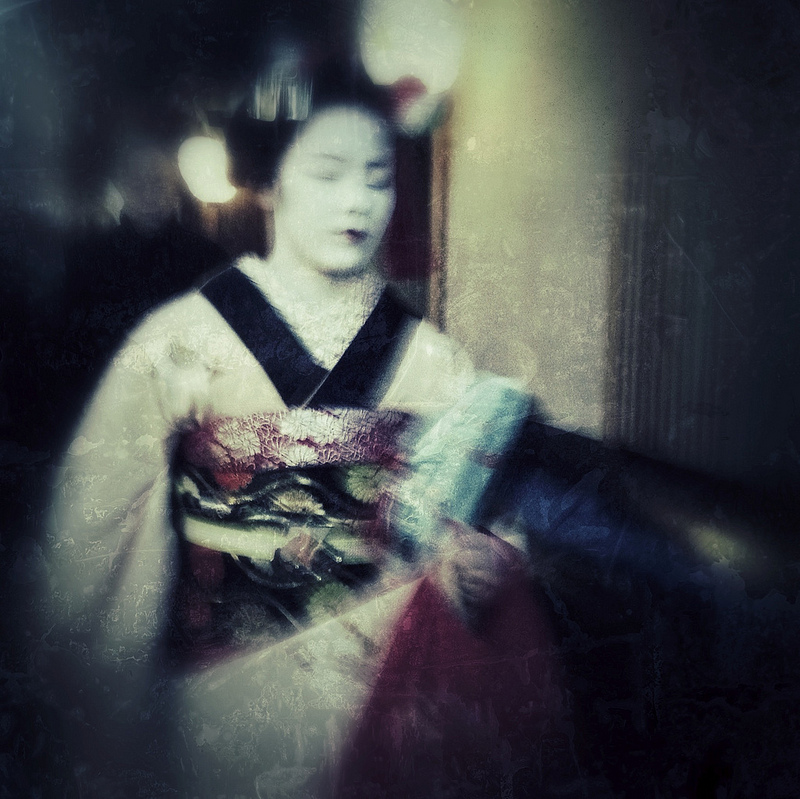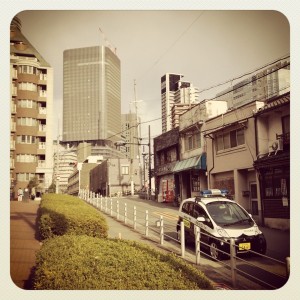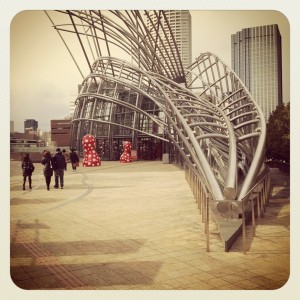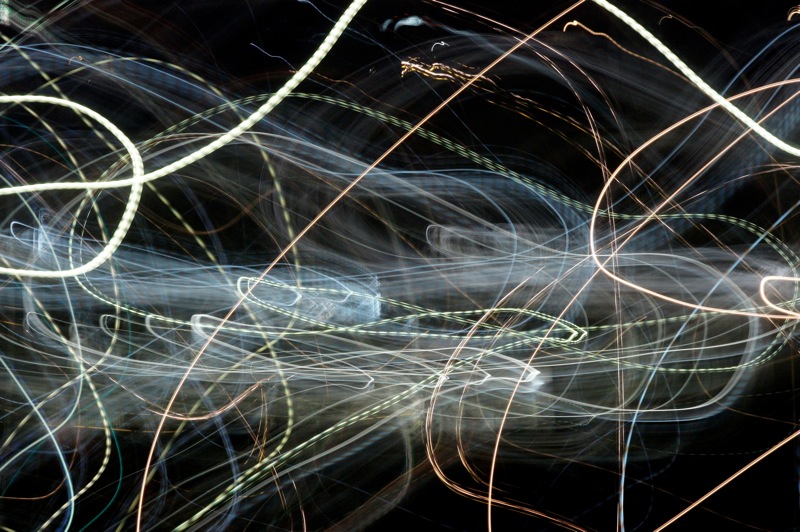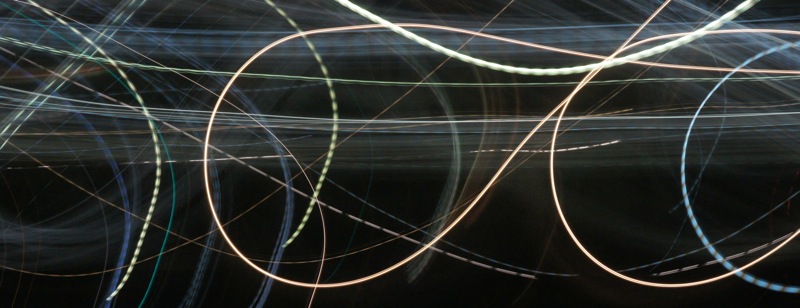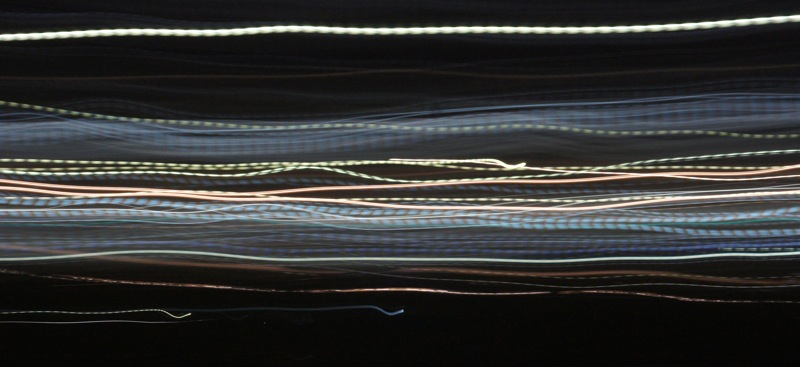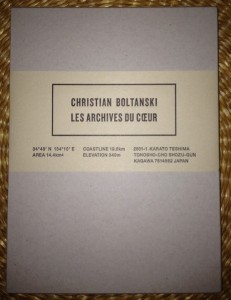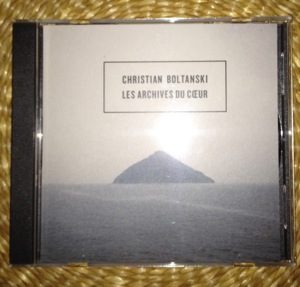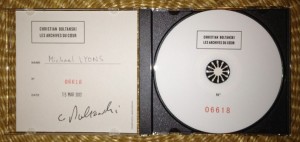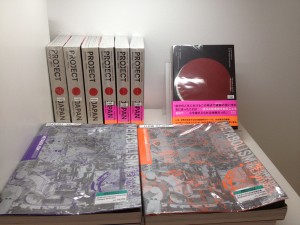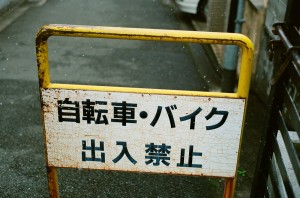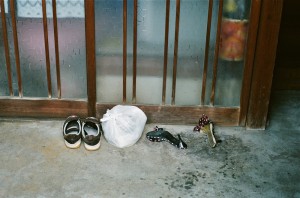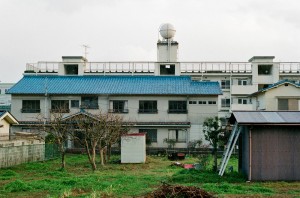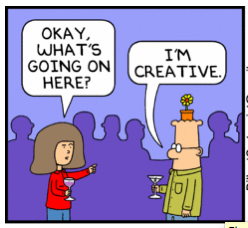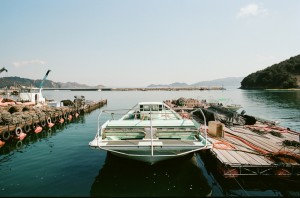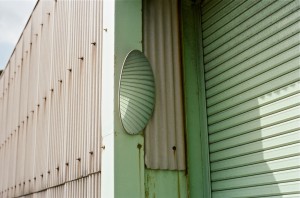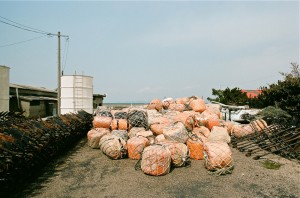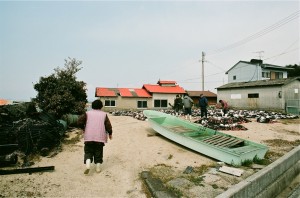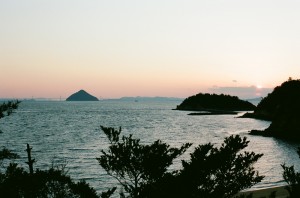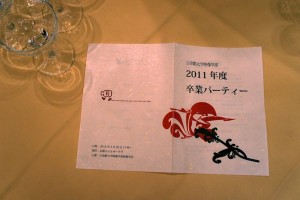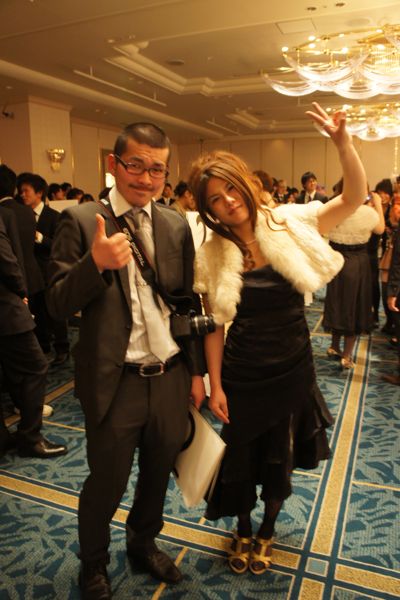Monthly Archives: March 2012
Walking around in Nakanoshima
Here’s a recording I made in Nakanoshima, on February 02, 2012, testing out a windshield for binaural microphones. If you listen with headphones you can hear some of the spatial qualities of the audio.
That’s a situationist yelp close to the beginning when a somewhat rude older couple hogging the sidewalk nearly walked into me. Manners!
The section at the end, a close-up recording of some kind of noisy machine for fixing the road, gives a strong percept of space. Here’s the section by itself:
Use headphones (or, more likely?, earbuds) to hear the binaural effect.
picture of the moon
(click for larger image)
According to the EXIF data this picture of the moon was taken on 2011/11/6 at 20:10 hrs with a SONY NEX-5 and a Leitz Summicron 50mm f/2 lens. The exposure was 13 sec, with the gain set to +2EV at ISO 1600, equivalent to ISO 400. I don’t have a record of the aperture, but it was probably stopped down to prolong the (automatic) exposure. No tripod.
Here are some light paintings made with the same method, but aiming the camera along the horizon to catch photons from shops, cars, and street lamps.
Les Archives du Cœur
Christian Boltanski, with the help of visitors to the “Archives of the Heart” located on a remote part of Teshima Island, is compiling an album of human heartbeats from around the world. Participants self-record the sound of their beating heart for inclusion in an archive at a dedicated building, which opened during the 2010 Setouchi Triennale. The building also has recording rooms and a special listening room where the heart beats are played back at loud volume. I recorded the sound of my heart on March 15, 2012 when I visited Teshima Island. Here’s how the recorded audio waveform looks:
Clearly it’s not a completely quiet recording, as the microphone was held against the chest manually. Have a listen (headphones recommended):
Retro-Futurism, continued
For some time I have been meaning to point out an excellent article on the avant-garde Japanese architectural movement of the 1960’s known as Metabolism. The article, by Amelia Groom, is titled Past Futures, was published in Frieze magazine earlier this month, and includes an interview of Pritzker prize-winning architect/theorist Rem Koolhaas by writer/musician Nick Currie (Momus) who was a guest speaker in our zemi in late 2010. Rem Koolhaas has recently published Project Japan, Metabolism Talks, in conjunction with the Metabolism exhibition at the Mori Art Museum in Tokyo last year.
The following quote from the Frieze article, a statement by Arata Isozaki (磯崎新) about the Big Roof pavillon at Expo’70, has stayed with me over the several weeks since I read the article:
Okamoto’s tower was allegedly named in reference to Season of the Sun, the 1955 novel by the disreputable current governor of Tokyo, Shintaro Ishihara, in which the protagonist breaks through a shoji paper screen with his erect penis. The Metabolists’ disapproval of it is encapsulated by Arata Isozaki’s histrionic condemnation in his 2006 book Japan-ness in Architecture: ‘Alas, when at last I saw Okamoto’s tower (looking like a giant phallus) penetrating the soft membrane of the roof, I thought to myself that the battle for modernity had finally been lost.
Here is precisely the meeting of avant-garde modernity with kitsch in an extremely candid and memorable fashion. As we know, Kenzo Tange’s (丹下健三) Big Roof is long gone but the Tower of the Sun (太陽の塔) has become perhaps Osaka’s most iconic landmark. I also found interesting a passage claiming Taro Okamoto (岡本太郎) framed this tension in terms of a simplistic Jomon/Yayoi dichotomy:
Okamoto had pushed for modern Japan to embrace what he considered to be the dynamic, primitive spirit of the nation’s Jomon legacy (c.14,000–300BCE), as opposed to what was perceived as the refined, reductionist and aristocratic aesthetic of the subsequent Yayoi era (300BCE–300CE).
Such simplifying theories of nationality were no doubt influenced by Okamoto’s Surrealist pals during his lengthy stay in Paris in the 1930’s.

I♥フィルム Pt.II
(click images for larger size)
More film photos, this time taken with a Nikon FM2 and Nikkor 50mm f1.8, a classic camera and lens both of near-legendary quality, and Kodak Gold 400. This film is one of Kodak’s cheapest offerings but, as you can see, there is nothing cheap about the quality. Some of these scenes should be familiar since they were all taken in Kinugasa, not far from campus.
By the way, when are we going to start making life easier for cyclists? Bicycles have the potential to help solve some of the world’s biggest problems.
Creativity
I♥フィルム
I always bring both film and digital cameras on my travels. This time I brought only my iPhone 4s, Nikon F3 (HP model) and two lenses Nikkor 24mm f2.8 and Nikkor 50mm f2.0 on my trip to Naoshima. I’ve had the 50/2.0 lens since I bought it new in 1977, when I was 15 years old. These pictures were taken using Kodak Portra 160 film (both NC and new types).
卒業オメデトウ!
MAVOxやなぎみわ: 1924人間機械
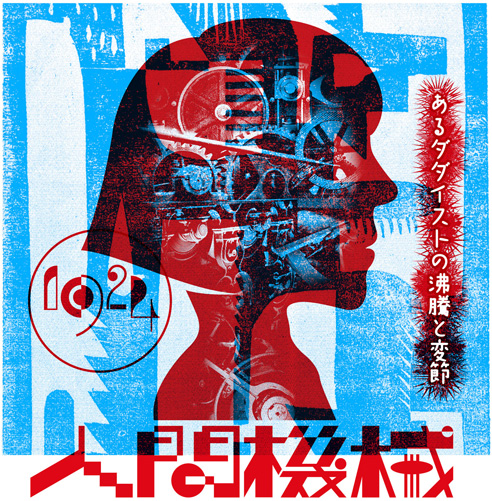
Conceptual art photographer Miwa Yanagi is producing Tomoyoshi Murayama (村山 知義) 1924 play Ningen Kikai (人間機械). Performances will be held at the Museum of Modern Art, Kyoto April 13-15, in conjunction with the Murayama exhibition. Tickets may be reserved at Miwa Yanagi’s official web site.

